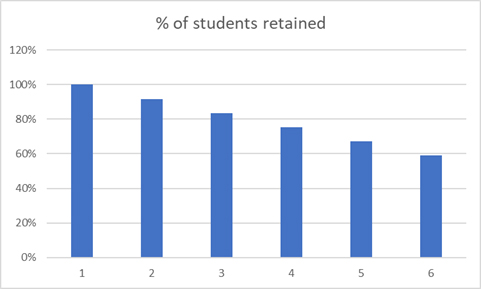In Higher Education, Retention and January go together like peanut butter and jelly. This month, many institutions will be concentrating their energies on retention, as well as admissions. So, where is the most logical place to start? With a simple but challenging task: How to track students. More specifically, how to communicate the tracking of students.
Every single higher education professional responsible for "numbers" that we’ve ever met has been downright hesitant to tell you how many students the institution will have in a given term. Once numbers start circling, they are guarded like a state secret, and only those "in-the-know" can have access, as if some fear that the information will somehow be used against them at a later time.
Is that your experience?
While we may believe we are doing a good job by protecting the institution from itself by following the rules above, what it looks like to everyone outside the "circle of trust" is that we are trying to hide our own incompetence. That thought, unfair as it may be, is real. We must act differently to lead our respective institutions in the path of understanding headcount flows.
There are three guidelines for accounting for headcount: Trust the data, maintain documentation, and rely on those whose sole purpose it is to bring new students into the institution.
Once you become responsible for projecting enrollment, it becomes imperative to trust the intelligence of those around you in understanding that student retention and admissions is not an exact science. Secondly, rather than making documentation scarce, document everything. Last, leverage the systems in place within Admissions and Student Services, and build predictions based on existing practices.
Documenting your process for predictions not only keeps you honest, but it also creates a history of predictions that will tell you if you are doing a respectable job or not. Predictions are not nearly as important as trends; trends depend on history, and history doesn’t exist without documentation.
When it comes to collecting information, use existing systems and make them better. In our experience, when tasked with the same necessities of an institution, we used an existing admissions process for tracking prospective students, and then added historical trends, as well as other numbers (such as campus visits). Collect as much information as you can, but don’t let the dream of a perfect data set stop you from moving forward.




